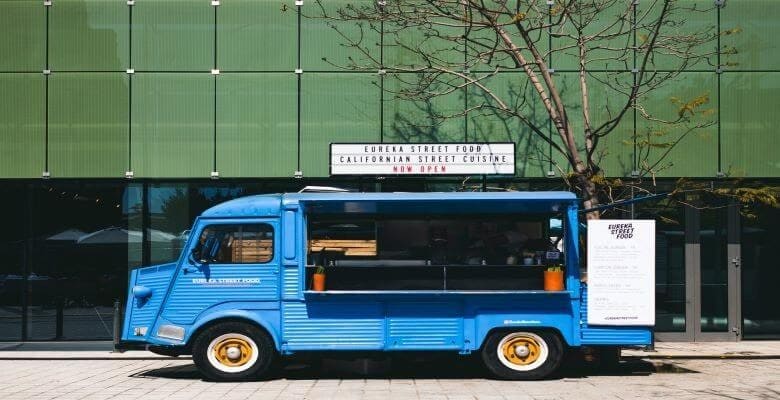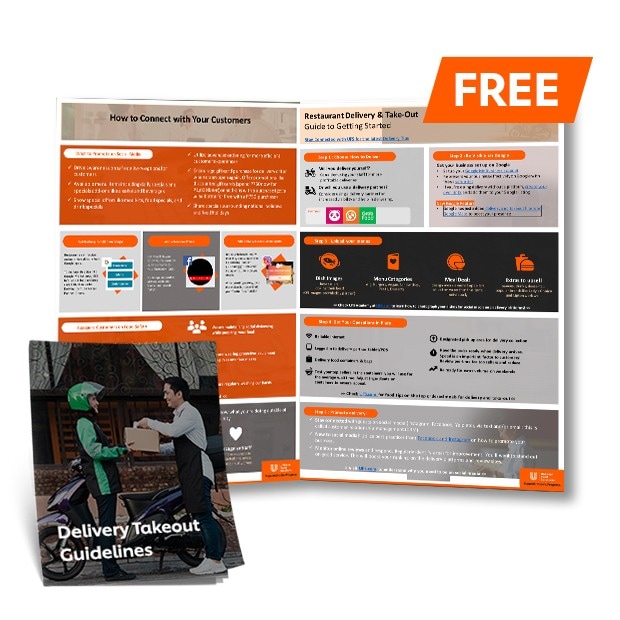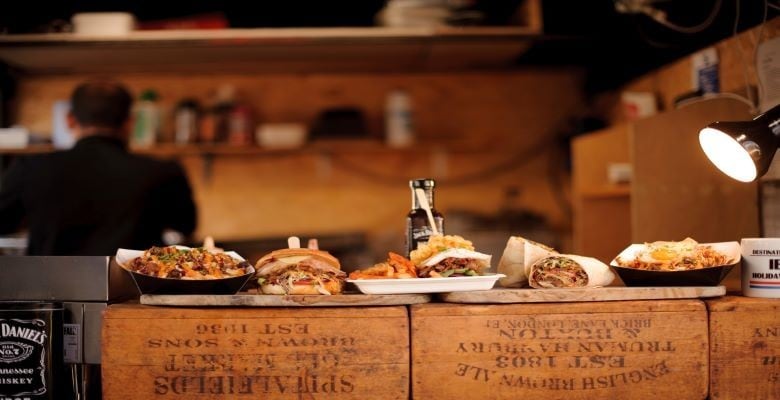You’ve probably heard this old saying: necessity is the mother of invention. The COVID-19 outbreak has been hitting the hospitality industry hard, which means that restaurant owners have been forced to find creative and inventive ways to continue attracting business. One such innovation that happens to be fresh out of the oven is the cloud kitchen. An interesting concept that not many people are familiar with just yet.
If you happen to be one of them, now is the perfect time for you to find out more about it. Read on to learn everything there is to know about this latest trend and how you can integrate this model into your restaurant business.

What is a Cloud Kitchen Concept?
A cloud kitchen concept is a commercial kitchen, also known as virtual kitchens, ghost kitchens, and commissary kitchens, that is not necessarily housed within a restaurant. This industrial kitchen isn't designed to make food for customers who intend to eat on-site. Instead, it's created only for takeout, delivery, and grab-and-go services.
More often than not, cloud kitchens are affiliated with a popular delivery service like GrabFood, Foodpanda, or any other local delivery service. Here’s how it works. Whenever your customer places an order, the cooking staff in the designated kitchen prepares it. Once ready, the booked delivery service picks it up and transports it directly to the waiting customer. It’s that simple.
The entire process is quick and seamless. Customers love it because it makes ordering food a breeze. Rather than having to call up a noisy, chaotic restaurant to place their orders, they can simply go through an experienced delivery service. And with COVID still present, customers find this streamlined method a safer way to order their food. Exposure is minimized since the food goes from kitchen to table, passing through as few hands as possible.
How to Apply a Cloud Kitchen Business Model to Your Business?
Getting started with a cloud kitchen can be done in various ways. Here's a breakdown of how to go about it if you are either new to the business or already have an existing restaurant.
Switching from restaurant to commissary kitchens
Reinventing a brand is common practice. Lots of restaurants do this all the time. Due to the current health crisis plaguing the world, many businesses had to rethink their models. For a lot of restaurants that had to close their doors or limit the number of dine-in guests they could serve, this meant switching strategies. Opting to run just the kitchen was one way many food establishments survived the over 2-year economic slump.
Maintaining kitchen facilities while closing down dining rooms allowed businesses to continue operations while recovering any losses. No significant changes in the business setup took place. However, it became apparent that it was necessary to have a reliable delivery partner and a system to take orders efficiently. Of all the changes, a quick menu overhaul is needed to ensure that all the food being prepared is takeout friendly. This meant selecting food items that would travel well and could still be served half an hour from when it was initially prepared. Aside from having a menu that's still palatable when reheated, having an ample supply of spill-proof packaging for your food items is just as essential. While you're at it, ensure that your containers display the restaurant's name and logo.
What if you want to plan on starting from scratch?
The beauty of a cloud kitchen is that it allows aspiring chefs and restauranteurs to launch their business minus the hassle of putting up a brick-and-mortar dining establishment. Assuming you fall under this category - and don’t have a kitchen to set up shop in, don’t worry. You can still get your endeavor off the ground. How? Consider leasing communal kitchens or shared kitchens.
As one may expect, the cost of leasing a kitchen will vary depending on certain components. Location, equipment, size of the kitchen, etc., are some of the things that will help dictate how much you will have to pay monthly. In general, however, the overall cost of renting delivery only kitchens is still far less than leasing an entire restaurant.
Even with governments lowering COVID 19 restrictions, it is evident that many people are opting to order food to go rather than dining in an enclosed space with strangers. Cutting out the dining element of your business will obviously help profit more given these circumstances. Additionally, renting from providers of commissary kitchens rescues the costs that come with getting a commercial place on your own. Typically, the costs for zoning permits or equipment installation are already taken care of by the lessor. Perhaps the best part about leasing ghost kitchens is the opportunity for aspiring business owners to start operations right away.
Using a food truck as a cloud kitchen
Food trucks are a growing trend around the world, and there’s never been a better time to look into opening up a food truck business. Food trucks are basically cloud kitchens on wheels, making them ideal during these socially distanced times.
By opening up a food truck, you can attract both grab-and-go customers and delivery customers. In other words, some people are going to seek out your food truck and buy food directly from the truck. Other people will want to order delivery from you. Setting up near a park, recreational area, or any location with good food traffic is a great way to attract customers. Local parks are an easy favorite since they allow customers to enjoy their food after buying from your truck.

Get a FREE Online Food Delivery Guide!
As always, Unilever Food Solutions aims to help restaurant owners and chefs with any questions or challenges they may face while running the business. With these tips, you're ready to figure out how to price your dishes for dine-in, takeaway, and delivery. Learn more about how to Get Started in Food Delivery with our Free Downloadable eBook below!

Can a Cloud Kitchen Save You Money?
The short answer is that, yes, a cloud kitchen can save you money in all kinds of ways. That’s because delivery-only kitchens are a great way to lower your overhead and cut administrative costs that are common in restaurant businesses.
Lower overhead
If you’ve run a traditional restaurant, you’re probably too familiar with the many costs involved. There are the utilities, the property taxes, and the maintenance costs, to name a few. None of these costs come into play when you’re running virtual kitchens! If you’re leasing the space, the provider takes care of taxes. Depending on your agreement, your utilities could also be covered by the lease, as well as for any maintenance work that needs to be done.
Now, if you are operating a food truck, your primary overhead cost will be utilities, followed by the maintenance of equipment as well as the vehicle itself. All in all, it’s a reasonably minimal expenditure.
If you’re leasing commercial space, you should look for a provider who can help you handle any other administrative hassles like health inspections, cleaning services, security, and necessary repairs. The perks of running a ghost kitchen are that, ideally, you get to focus on making the best possible meals for your customers. The goal is to find a setup where administrative matters can be handled by someone else - like the owner of the space you are leasing.
Lower payroll costs
Running a restaurant takes a lot of staff. You need to hire a host or hostess to greet customers at the door. Waitstaff, cashiers, bartenders, busboys, and kitchen crew are also part of your payroll. For restaurants that deliver, able delivery riders should also be employed.
On the other hand, if you are running kitchen facilities, you only need to staff your kitchen. Because you aren’t running a dining room, your employee headcount decreases. Just make sure to hire great cooks and sign up for delivery apps.
Expand Your Restaurant Business with a Cloud Kitchen
Traditional restaurants are rooted in place and are generally housed within cement walls. Although many traditional restaurants offer some delivery service, their primary design is still to bring customers into the dining room.
In contrast, a cloud setup encourages you to broaden your consumer reach. Rather than content yourself with targeting a specific zone, the food menu that you provide can attract customers from other localities. Thanks to food delivery apps, users can choose to look at food options in neighboring cities.
To make the most of these online delivery solutions, it would help to brand your packaging clearly. Think of your food containers as an inexpensive way to advertise your business.
Of course, if you’re running a food truck, it is even easier to extend your food services throughout your local area. Simply keep your truck moving as you look for great new locations! Many food trucks find that using social media is a great avenue to generate buzz about their food. Customers often have a lot of fun following food trucks on Twitter and speculating about where they might pop up next.
Getting Ready to Run a Cloud Kitchen
If you’re serious about running a cloud kitchen, your first step involves thoroughly putting together your menu.
That’s because you’ll need a menu that reflects the unique needs of takeout and delivery customers. You’ll need to sit down and go through your meal offerings carefully to make sure that they all can be delivered efficiently, from commissary kitchens to your customer’s doorstep without spilling or making a mess. You’ll also need to make sure that all of your menu items are the kind of things that can be served well after they’re prepared. These foods should look and taste as great as when they were first prepared.
This means you’ll want to veer away from foods that need any kind of tableside final touches. For example, any food that needs a sauce to be poured over at the last minute is an absolute no-go for the delivery business.
It’s also a good idea to add some grab-and-go items, especially if you’re running a food truck where people might want to just run up and get food quickly. What are grab and go items? Typical items include sandwiches (already wrapped up) or pastries; they might also include salads (possibly with the dressing on the side, to reduce the risk of sogginess) and wraps, or even soups and burritos. These are often food items that can be prepared beforehand and can be consumed with ease. The possibilities of these menu options are almost endless.
Final Thoughts
Whether you’re an experienced restaurant owner or simply someone interested in getting into the food business, cloud kitchens are a great option to consider.
When you open a restaurant business with only ghost kitchens, you’re looking at a lot less risk than you’d have to open a traditional restaurant. That’s because both the upfront costs and the overhead are much lower. Furthermore, partnering your industrial kitchen with a food delivery service allows you to reach a wider customer base than a conventional restaurant would.
As you may have also noticed, the dynamics of dining out have changed drastically due to the health-related concerns that have afflicted the world. Nowadays, individuals who used to partake in public social gatherings have slowly shifted towards enjoying meals with friends and family in a more private environment.
The creation of these bubbles has, in turn, created a stronger food industry that follows the online delivery trend. It only makes sense for establishments to focus their efforts on communal kitchens or shared kitchens that can prepare good tasting food efficiently and safely.
Hopefully, this guide has given you a good overview of everything you need to know about opening your cloud kitchen! Good luck in this exciting new endeavor.